Japan 2008: Marumoto Brewery and Chikurin
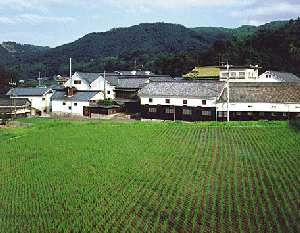
Beautiful Marumoto Brewery
Brewery President, Mr. Marumoto explained that the brewery was founded in 1867 at the end of Edo period and has been producing sake since then. However, this brewery isn’t just famous for it’s sake. The wooden framed brewery complex is registered as an “Important Cultural Property” by Japanese goverment, similar to the National Register of Historic Places here in the US.
Growing Your Own Rice
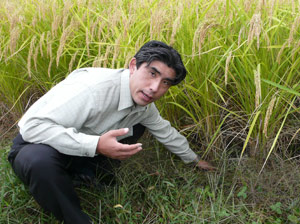
Marumoto-san Explains Sake Rice
We visited several of his rice paddies around and toured some fields that had different levels of fertilzer, and some that were certified organic. The more I saw, the more I realized how dedicated Marumoto-san was to creating the perfect rice for his sake.
Sake Rice Steaming
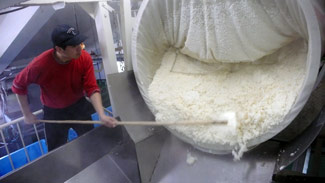
Just Steamed Sake Rice
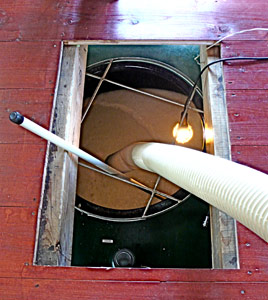
Rice Goes Into the Tank
That is what was happening on the day I was at Marumoto Brewery. Once collected after this brief cooling, the rice is transported to the main mash vat. How do that do that? Like many other breweries, they use a flexible tube to blow the rice along. This tube gets stuck through the floor and right into the top of the vat on the floor below. After the rice addition, the mash gets stirred into the vat using a long pole. Maruomoto-san and his staff demonstrated how this mixing was done and I tried it myself, but I was a sorry excuse for a kurabito. Maybe after a few months of practice could I get it down pat.
In addition to the steaming and adding rice to the main mash, I also got to see the Koji room, the mash pressing area, the milling room and also the bottling and storage facility. It was especially interesting to see the large refrigerated room where the Chikurin Hou Hou Shu Sparkling Junmai sake undergoes its second fermentation in the bottle. A lot of New Year’s Eve toasting starts right here!
Dinner with a Surprise
A report on my visit to Chikurin wouldn’t be complete without a mention of the very special dinner Maruomoto-san invited us to. At the start of our meal, a rice paper screen opened at one end of the banquet room, and we were treated to a demonstration of “Shiki Hocho”, or the centries old and elaborate fish carving ritual that allows the chef to use a knife and chopsticks but not touch the fish directly.
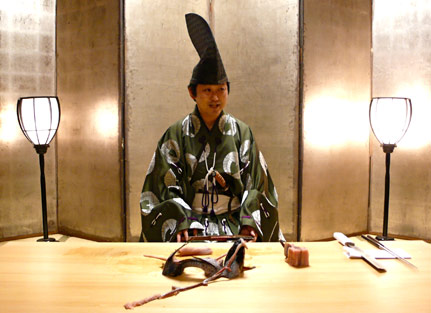
Viewing the Rare Art of Shiki Hocho
All the guests at dinner sat in stunned silence as the ritual proceeded and every movement was deliberate and beautiful. Before I knew it, the sea bream on the table was carved into an elaborate shape of real beauty. This method of fish preparation was done for both the emperor and shogunate starting as early as 895 A.D. I was extremely impressed by the beauty of this and I felt so fortunate to have seen it myself. I know this is something that even few Japanese have seen in person. Am I a lucky guy, or what?!.
Chikurin Sakes
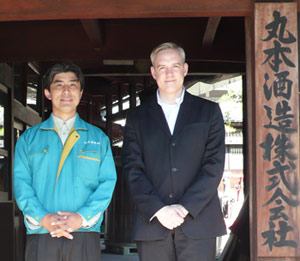
With Mr. Marumoto
From the once pasteurized, light and lovely Chikurin Karoyaka Junmai Ginjo to the rich and wonderfully silky smooth texture of the Chikurin Taoyaka Junmai Daiginjo, I saw first hand how these sakes are a true labor of love. I can’t thank Maruotomo-san enough for the wonderful hospitality and tremendous learning during my time at Chikurin. I had experiences I will always remember! Thank you!
Reflecting back on this time, I can’t help but think how much more enthusiasm and appreciation I have for sake with each brewery I visit. It’s magic what they do at places like Marumoto Brewery. Thanks for the magic you bring to all of us.
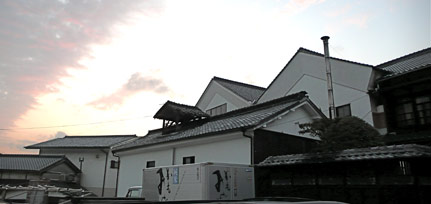
Chikurin at Dusk


